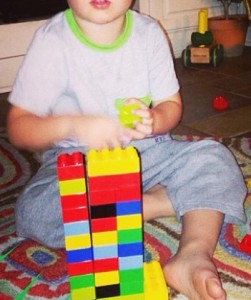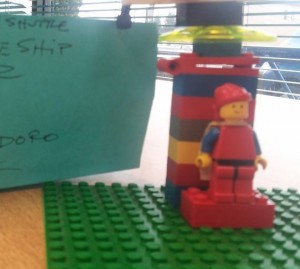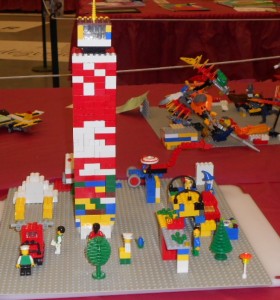We just got to see the Lego movie; I won’t give away any secrets and spoil the movie if you haven’t seen it, but in my opinion, it needs to win both a gold medal and an Oscar. Plus, after watching it, kids will be even more inspired to play and create with Lego, and grownups too. Lego supports all kinds of fun, kindergarten readiness and learning. Younger children can use the larger Duplo. Not only is it easier for little hands, it doesn’t seem to attack adult feet.
 One of the most obvious ways that Duplo supports early learning is by encouraging lots of manipulation. Very young kids will start by holding the blocks which are just right for hands. Even the action of picking them up will require eye-hand coordination. Kids will move on to connecting the blocks, stacking them, putting them side-by-side or end-to-end, and balancing them. Taking blocks apart is good exercise for hands too. Sometimes, this involves twisting, prying, turning, and asking for help from grownups.
One of the most obvious ways that Duplo supports early learning is by encouraging lots of manipulation. Very young kids will start by holding the blocks which are just right for hands. Even the action of picking them up will require eye-hand coordination. Kids will move on to connecting the blocks, stacking them, putting them side-by-side or end-to-end, and balancing them. Taking blocks apart is good exercise for hands too. Sometimes, this involves twisting, prying, turning, and asking for help from grownups.
The development of the small muscles comes after the development of the larger body muscles. As kids move and are active throughout the day, they strengthen their big motor coordination and skills. Developing the fine motor skills needs opportunities for practice, such as puzzles, finding small objects in sensory bins, and building and construction toys. Once children have improved their coordination, they can enjoy using the small Lego blocks.
Another action that kids like to do with blocks is, of course, knocking them over. For children, doing is often more important than having, so knocking something over can add to the fun. As long as it’s their own creation, it’s usually acceptable. If it belongs to a brother or sister, or a friend at daycare or playschool, there may be some other reactions and emotions.
What other actions does Lego or Duplo encourage for your child?


